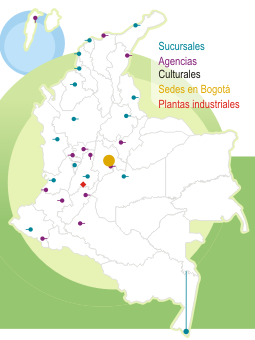This was the Launch of the Reissuing of the Final Report of the 1986 Employment Mission
Notes by the Governor of Banco de la República (the Central Bank of Colombia), Leonardo Villar-Gómez, at the launching of the reissuing of the 1986 Chenery Employment Mission Report, “Misión de empleo. Informe final, julio 1986”.
Above all, the reissuing of the 1986 Chenery mission report is a posthumous tribute to Manuel Ramírez-Gómez, one of the coordinators of the mission, represented at this event by his daughter María Teresa. This edition has a nice and very complete article about Manuel written by Andrés Álvarez.
This is how this reprint was conceived by its great promoter, Diego Pizano-Salazar, who was also the great promoter of the Mission, 37 years ago, during Belisario Betancur’s government as he relates in the interesting introductory article written for this book.
Aside from Manuel’s profile written by Andrés Álvarez and the article by Diego Pizano, the other novelty of this new edition is a preface written by José Antonio Ocampo, the other coordinator of the Mission, with very interesting reflections on the context in which the Mission was carried out and on what has happened subsequently in the Colombian labor market.
The reprinting of this report also makes it necessary to mention Juan Luis Londoño, another great economist who passed away at a young age and who was very important in the Chenery Mission as its technical secretary when he was just beginning his professional career.
We will have presentations by María Teresa Ramírez, Andrés Álvarez, Diego Pizano, and José Antonio Ocampo, so I would just like to take this opportunity to make three very brief reflections on the Chenery Mission and the Colombian labor market:
First. The Chenery Mission was one of the most important contributions to the study of the Colombian labor market. Several leading national and international authors participated in the mission, and many of their diagnoses and recommendations are still valid almost forty years later. Among the mission's outstanding contributions is the distinction between the adjustment mechanisms of the formal labor market and those of informal employment. Thus, for example, while in the formal sector the adjustment mechanism to an economic slowdown such as the one that occurred between 1982 and 1985 was mainly in terms of quantities, reflected in higher unemployment rates, in the case of the informal sector, the slowdown was mainly manifested in lower worker income. Seen from the current situation, the great challenge that arises from this ,is how to increase the income level of informal workers and how to bring them closer to the income levels of formal workers, which are typically higher and associated with higher productivity levels.
Second. In its recommendations, the Chenery mission strongly emphasized the need to promote high levels of growth to absorb a labor force that at that time was growing at a rate of 4.0% per year, partly for purely demographic reasons and partly due to the accelerated integration of women into the labor market. The goal set in that context for GDP growth was 6.0% per year, a goal that was certainly not met, since, as Ocampo says, economic growth from 1985 to 1990 was 4.5% per year. The big question is whether the way to promote higher growth was through higher aggregate demand or through a more accelerated devaluation of the Colombian peso, as suggested in some of the scenarios in the report. The big problem is that these policy alternatives would probably have led to even higher levels of inflation than those observed in the late 1980s and even exceeded 32.0% in 1990 (well above the 21.0% of 1986 and what was considered the maximum socially and politically admissible level of inflation). Certainly, a transformation of the productive structure towards sectors with greater export capacity was desirable, but this could not necessarily be achieved through the management of nominal variables such as monetary aggregates or the devaluation of the Colombian peso.
My third reflection has to do with the role of labor regulation and wage costs on employment behavior and the capacity for economic growth. The Chenery mission clearly showed the biases generated in the 1980s by the high costs of having older workers, mainly due to the impact of the retroactive nature of partial withdrawals of severance pay and the dismissal and severance pay regime, which, according to the report, "inadequately fulfilled the objective of promoting job stability and protecting workers who lose their jobs after a continuous period of service in a company" (pp. 297-298). The post-Mission Law 50 of 1990 corrected several of these problems and I believe it was a good example of an effective policy to reduce unemployment. Although the economy grew between 1990 and 1993 well below the mission's target of 6.0%, the unemployment rate fell substantially, from 10.45% to 8.6%, for seven metropolitan areas (the lowest level since 1981). In contrast, between 1993 and 1997, although the economy maintained relatively high growth rates, the unemployment rate rose sharply to 12.43% in the last of those years, and thereafter it has been exceptional for them to return to single-digit rates. One possible explanation for this paradox has to do with the sharp increase in the labor costs of hiring a formal employee after the entry into force of Law 100 of 1993. The reduction in labor costs in 1990 through Law 50 and their increase as of 1994 as a consequence of Law 100 constituted an interesting quasi-experiment that helps to corroborate the importance of this variable in the performance of the labor market. Later on, the reduction of health care payments by employers in the 2012 tax reform was also an experiment that many of us studied carefully and that ratified the perception that labor cost overruns are detrimental to formal employment in significant magnitudes.
See the reprinted book (only in Spanish)








































































